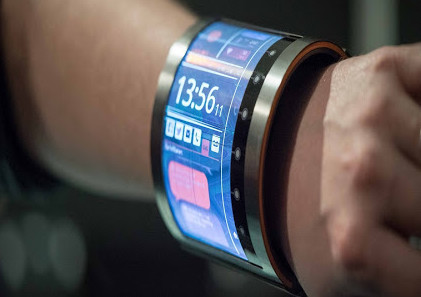‘The rise of plastic and flexible displays will be accompanied by a shift from glass substrates to plastic substrates’* according to industry experts. Flexible displays bring a new degree of design freedom for product designers and we’ve been working with partners to develop the industrial process that will make them a mainstream technology.
We’ve already explained how the automotive and aerospace industries could benefit from lighter, flexible displays, and in this blog we look at a few more applications of this exciting technology.
Wearables

Wearables are not confined to the wrist alone; flexible displays can be also integrated into clothes, shoes and accessories making surfaces come to live.
Mobile devices
Whether you want a large screen for playing games or watching videos, or a foldable screen for convenience, flexible displays can offer larger viewing area while not compromising user comfort.
Not everything is about size and flexibility. Breakability is a big issue for mobile screens, and plastic displays will offer a shatterproof solution.
Digital signage

Household goods

Bringing flexible displays to the mass market
At FlexEnable, we’ve developed the technology that can make all of the above examples possible. Our flexible electronics platform can be used for the manufacture of glass-free, flexible displays and sensors. It uses a low temperature production process which ultimately means lower cost per unit while demonstrating better electrical performance than conventional TFT technology.












